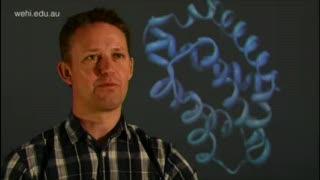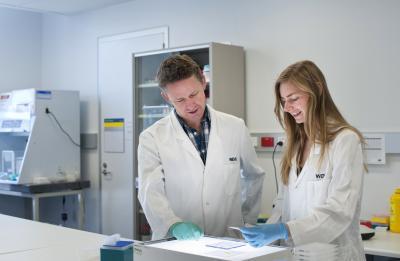"By using the powerful X-ray beams created by the synchrotron, we obtained structures of Bax that were really exciting," Dr Czabotar said. "Bax is activated when small protein fragments called BH3-peptides bind to it. We saw that these peptides open up the Bax molecule like a key unlocking a padlock. This unlocked form of Bax can bind to another Bax molecule, which can then form larger Bax complexes that can go on to break up membranes in the cell.
"As well as explaining the detail of how cell death occurs, our research could provide clues about how to design potential new therapeutic agents that target Bax," Dr Czabotar said. "Now that we can see how Bax changes its shape to move from the inactive to the active form, it may be possible to block Bax activation, to prevent cell death in conditions such as neurodegenerative disorders, where illness is caused by excessive cell death. Similarly, agents that drive Bax into its active form could force immortal cells such as cancer cells to die, providing the basis for a potential new class of anti-cancer agents."

Dr. Peter Czabotar of the Walter and Eliza Hall Institute, Australia, discusses his discovery of how a key molecule, Bax, changes its shape to drive cell death.
(Photo Credit: The Walter and Eliza Hall Institute, Australia)

Dr. Peter Czabotar (left) and Dr. Dana Westphal for the first time visualized the molecular changes in a critical cell death protein that force cells to die.
(Photo Credit: The Walter and Eliza Hall Institute, Australia)
Source: Walter and Eliza Hall Institute